Elementary Patterns
Beginning chess players improve most rapidly when they learn certain common patterns. Among the first are elementary checkmate patterns such as a back-rank mate, or rolling rooks (the first one I learned back in the 1960s). The infamous smother mate is a popular pattern, but rare in actual play. Even so, it might help beginners learn such notions as forcing moves, double check, and piece coordination.
Other patterns include many basic king and pawn endgame positions. In this position, for example, White wins no matter who is on the move.

If the White king and pawn switch places, the position is drawn regardless of who has the move.
When players are learning opposition and pawn promotion, they master a few fundamental positions such as these. As skills improve, the number and complexity of the positions increases.
In the next diagram, White to move draws by seizing and maintaining the opposition.
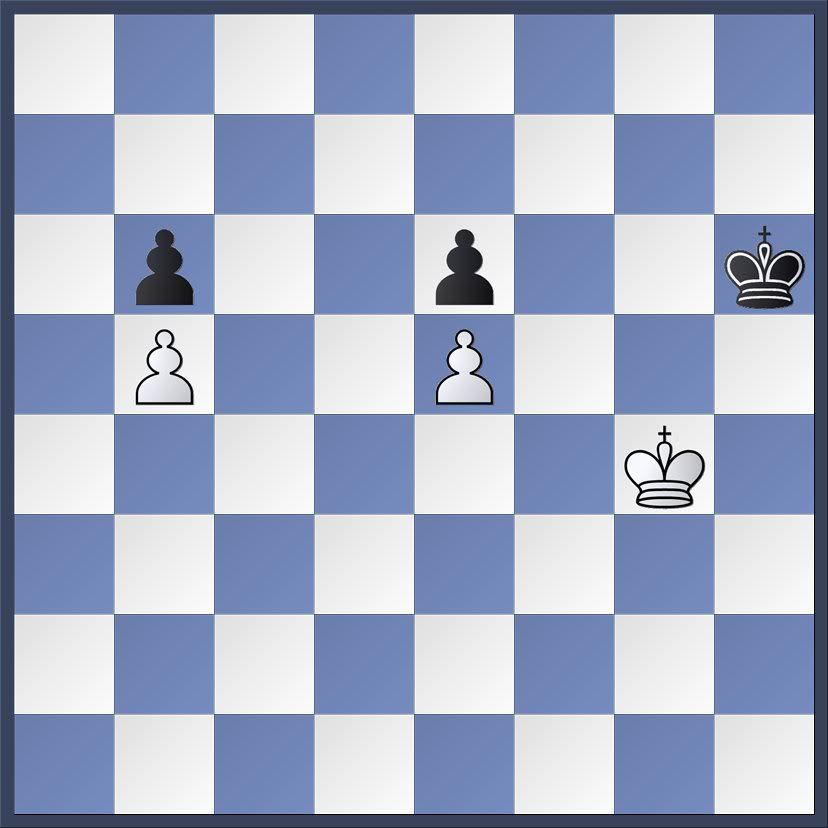
1.Kh4 is the only move.
If the position occurs with Black to move, Black wins with 1...Kg5, seizing the opposition. 2.Kf4 Kh5, outflanking. The White pawn on e5 will fall, then the b-pawn falls and Black's b-pawn will promote.
It all comes down to patterns. Often elementary patterns are concealed in complex positions.
Dead Draw
If we add a pair of pawns to the position, it no longer matters who has the move.
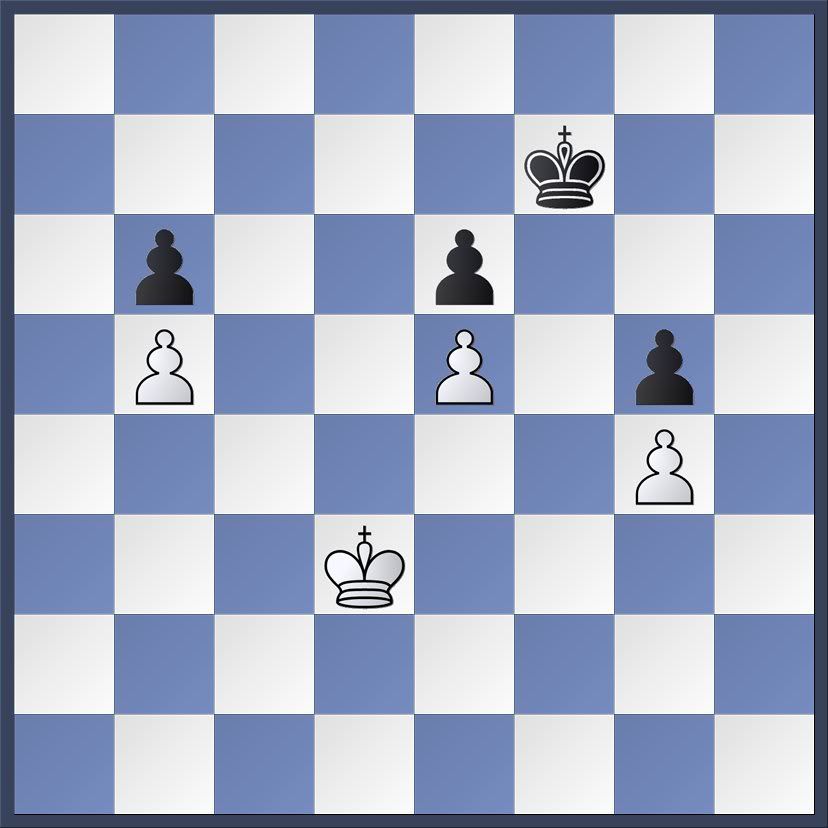
The board is completely locked up by the pawns, and neither king can penetrate to a square where it can attack an enemy pawn. This relatively simple dead draw is latent in a more complex position from Plater -- Bobotsov, Miedzyzdroje 1952.
White just played 59.Kf3 and a draw was agreed.
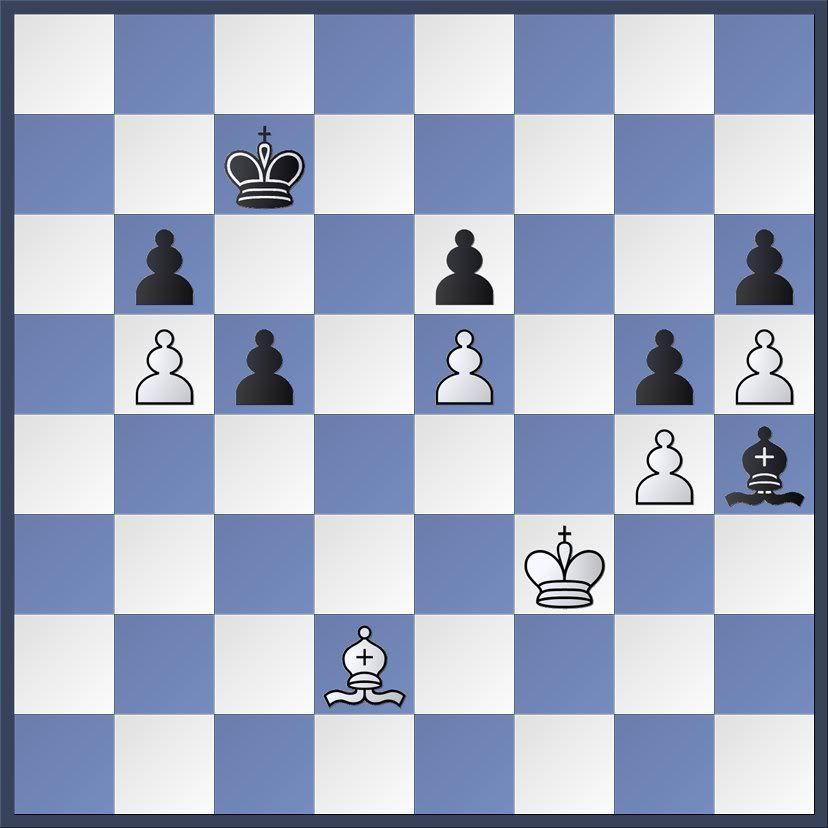
Black has a passed pawn, but the moment it advances to c4, neither the king nor the bishop can protect it from White's king. Neither player can make progress.
Silicon Versus Carbon
Our elementary position was latent in Game 7 of the World Chess Championship recently concluded in Bonn, Germany. The critical aspects of the pawn structure remain the same.
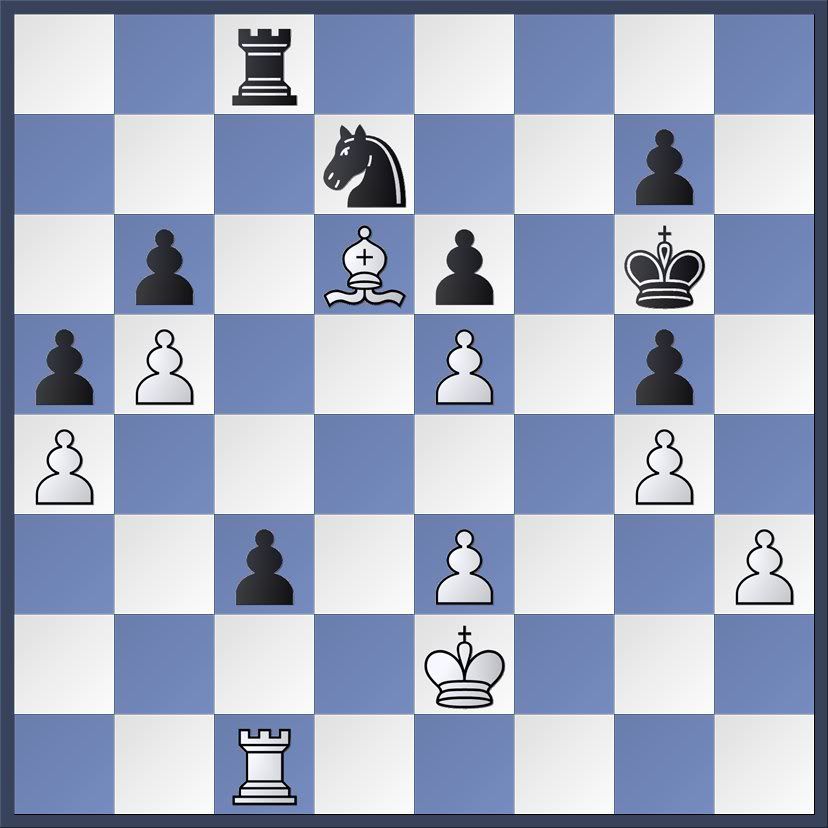
While watching the game, I wrote:
Hiarcs 12 gives +1.52 +- for the line 33.Kd3 Nc5+ 34.Bxc5 Rxc5 35.Rxc3 Rxc3+ 36.Kxc3 Kf7. However, the engine is too optimistic. Both kings are almost completely locked out of the other side, and the Black king is better positioned for the only available point of penetration along the h- and g-files. After some exchanges there, the kings keep each other at bay. There is no other way through. The engine cannot assess the pawn structure well enough, it seems.Our silicon friends that watch chess games with us and offer grandmaster level commentary can be horribly wrong. Humans commenting on the game at this point recognized the position as a dead draw, but many of us were reporting that our engines thought otherwise.
I rather suspect, however, that if Rybka were running its Monte Carlo Analysis, it would have recognized the position as clearly drawn.
The position looks complicated with rooks on the board, a bishop versus a knight, and a few almost mobile pawns. Among beginners, it is even possible for either player to lose this game: an h3-h4 push at the right moment could give either player a decisive advantage, depending upon the relative placement of the kings. If White lets Black's knight dance, certain pawns could fall, including Black's anchor at b6.
Of course, neither Vladimir Kramnik nor Viswanathan Anand would let this position deteriorate when it can be held so easily. Nor should a B-class player.
As in the case of the Shirov Test or Sergei Rublevsky's tremendous combination from Chess Informant 94, human intuition informed by pattern recognition renders carbon life forms (humans) capable of seeing in the position a decisive element that is beyond the search horizon of the computer.
4:40pm PDT Postscript:
In answer to Chesstiger's observation in the comments, I might add that it may be helpful to think of patterns as both static and dynamic. Pawn structure is an example of the static aspect; the movement of a king to seize the opposition is dynamic. In smother mate, the final position is static, but the customary method of bringing it about with a double-check followed by a decoy sacrifice is a dynamic pattern.
Adriaan de Groot's seminal study suggested that master and expert chess players recalled the functional relationships between pieces more clearly than their precise locations. That is, a bishop pinning a knight is more critical to the pattern than whether the bishop stands on g5 or h4.
Even an elementary setting with locked pawns, the possibilities of movement appear critical to the pattern. In the diagram below, none of the pawns can move to the red squares. But the point of the position is that White's king is restrained from moving to those squares because a black pawn could move to each of those squares if occupied. The dynamic potential is inherent in even static positions.
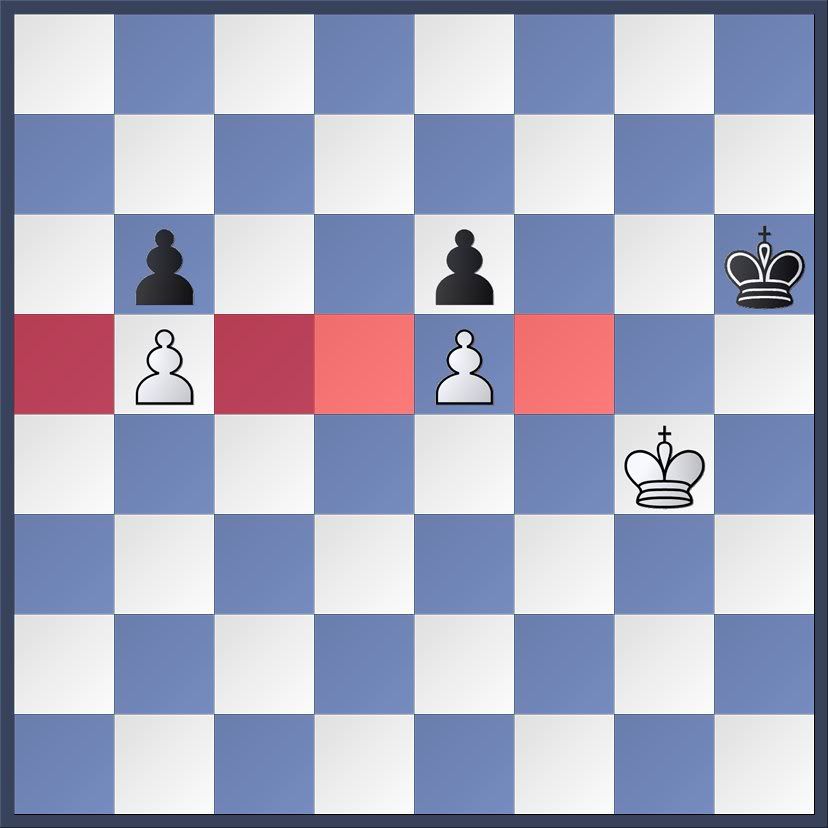
Pattern recognition is rooted in the dynamic relationship of the pieces, not merely their placement on certain squares. If not for the knowledge of how the position is maintained, the position of the pawns would lack salience.














I think it's not the patern(s) that we must recognize but the way we hold it a draw (or win)because knowing a patern is good but if we dont know how to continue we have nothing about all those recognizing paterns.
ReplyDeleteThanks for making that point.
ReplyDeleteI mostly agree with you, but still believe that patterns are the key, as long as the patterns are understood in terms of their dynamic aspects. I've added a "postscript" clarifying my argument.